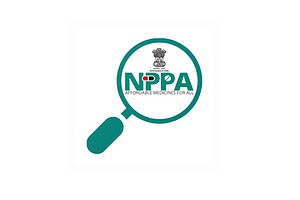Last Updated on October 26, 2024 by The Health Master
QR Codes
In a groundbreaking move, the Drugs Consultative Committee (DCC) of the Union health ministry has proposed a significant amendment to drug regulations regarding QR Codes in Pharma.
The DCC suggests an expansion of the mandate for Quick Response (QR) codes in pharma, specifically for the top 300 brands.
The primary goal is to include comprehensive information on all excipients utilized in drug formulations.
This shift aims to provide patients with vital information, marking a positive stride in pharmaceutical transparency.
The Initial Advisory Approach
The DCC’s previous meeting recommended issuing an advisory to manufacturers.
This advisory urged the voluntary inclusion of excipient details on drug formulations.
However, the latest DCC assembly identified challenges in mandating the inclusion of all excipients on product labels due to practical constraints.
This realization prompted the committee to explore alternative methods for capturing and disseminating this critical information.
QR Codes and Package Inserts
To address the practical challenges faced in listing all excipients on product labels, the DCC proposes two effective solutions.
The first involves incorporating the necessary details into the QR code, a digital avenue capable of accommodating extensive information.
The second suggests including this information in the package insert, ensuring accessibility for patients seeking comprehensive details about their medications.
Recommendations in the 62nd Meeting
During its 62nd meeting in September 2023, the DCC recommended amending the November 17, 2022, notification.
This amendment would specifically focus on capturing essential information within the QR code for the top 300 brands.
This strategic move reflects the committee’s commitment to balancing practicality and the need for patient-centric drug information.
Grievances and the Need for Clarity
In the 61st DCC meeting on June 1, 2023, concerns were raised about the usage of parabens as excipients in pharmaceutical products.
Patients with allergies faced inconvenience due to the absence of clear indications regarding excipient composition on medicine strips in retail medical shops.
Recognizing this issue, the committee proposed rectification through the addition of excipient details or International Numbering System (INS) codes on every medicine strip.
The Package Insert Conundrum
Despite recognizing the importance of excipient details, the DCC noted the absence of a mandatory provision for manufacturers to provide package inserts with drugs in the country.
This raises questions about the criteria for mandating excipient information on drug formulations, prompting the committee to evaluate the implementation of such measures thoroughly.
Advisory on Voluntary Basis
In the 61st meeting, the DCC recommended issuing an advisory for manufacturers to include excipient details on drug formulations voluntarily.
This reflects a measured approach to balance the need for information with the practical challenges faced by the pharmaceutical industry.
Conclusion
The DCC’s progressive steps toward enhancing drug information signify a commitment to patient welfare.
The proposed amendments and recommendations aim to strike a delicate balance between practicality and the crucial need for patients to be well-informed about their medications.
FAQs
- Why is including excipient information important for patients?
- Understanding excipients helps patients with allergies make informed choices, promoting their well-being.
- How will the proposed amendments benefit pharmaceutical manufacturers?
- The amendments, focusing on QR codes and package inserts, offer practical solutions that enhance transparency without imposing undue burdens on manufacturers.
- What is the significance of the INS codes mentioned in the proposal?
- INS codes provide a standardized way to identify excipients, aiding both patients and healthcare professionals in understanding composition.
- Are there concerns about the practicality of including all excipients on product labels?
- Yes, practical challenges led the DCC to explore alternative methods like QR codes and package inserts.
- How can patients access information encoded in QR codes?
- Patients can use smartphones or dedicated QR code scanners to access detailed information encoded in QR codes.
Disclaimer: This article contains information derived from the source mentioned below. Our team utilized an AI language model to rewrite and present the news or article in a unique format.
Bar Code or QR Code: Implementation mandated for Top 300 Brand Drugs from August 1, 2023
IDMA proposes additional cost allowance for QR Code implementation
Govt asks Pharma Industry to go for QR code instead of SMS code
QR codes on Schedule H2 drugs: Addressing the issues of counterfeiting
Bar code or QR code for 300 brands: Govt notifies these drugs under Schedule H2
Govt Job: For the post of Drug Inspector under Public Service commission
USFDA Approval granted for Pitavastatin Tablets
Rusan Pharma invests Rs. 300 crore in API plant: MP
Biometric cards for Pharmacists for efficient drug dispensing
Drug Regulatory Authorities: Worldwide
Swift Action Against Unauthorized Drug Sales: License suspended
Govt Job: For Pharmacovigilance Associate at IPC
Drug recall: Pain & Fever drugs recalled Due to this reason
For informative videos by The Health Master, click on the below YouTube icon:
For informative videos on Medical Store / Pharmacy, click on the below YouTube icon:
For informative videos on the news regarding Pharma / Medical Devices / Cosmetics / Homoeopathy etc., click on the below YouTube icon:
For informative videos on consumer awareness, click on the below YouTube icon:













